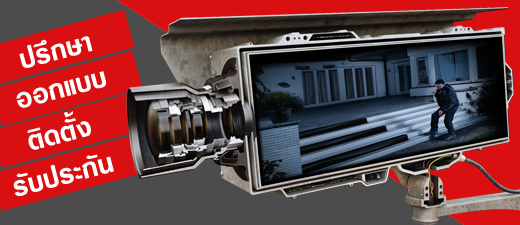หน้าแรก >> CCTV Surveillance
Video’s Critical Role in the Security Plan
1.5 THE BOTTOM LINE
The synergy of a CCTV security system implies the follow ing functional scenario:
• An intrusion alarm sensor or VMD will detect an unau thorized intrusion or entry or attempt to remove equip ment from an area.
• A video camera located somewhere in the alarm area is viewing the area at the location or may be pointed manually or automatically (from the guard site) to view the alarm area.
• The information from the alarm sensor and/or camera is transmitted immediately to the security console, mon itored by personnel, and/or recorded for permanent documentation.
• The security operator receiving the alarm information has a plan to dispatch personnel to the location or to take some other appropriate action.
• Mter dispatching a security person to the alarm area the guard resumes normal security duties to view the response, give additional instruction, and monitor any future event.
• Mter a reasonable amount of time the person dis patched should neutralize the intrusion or other event. The security guard resumes monitoring that situation to bring it to a successful conclusion and continues moni toring the facility.
The use of video plays a crucial role in the overall secu rity system plan. During an intrusion, disaster or theft, the video system provides information to the guard, who must make some identification of the perpetrator, assess the problem, and respond appropriately. An installation containing suitable and sufficient alarm sensors and video cameras permits the guard to follow the progress of the event and assist the response team in countering the attack.
The use of video and the VMD capability to track an intruder is most effective. With an intrusion alarm and visual video information, all the elements are in place for a timely, reliable transfer of information to the security officer. For maximum effectiveness, all parts of the security system must work together synergistically. If an intrusion alarm fails, the command post may not see the intruder with sufficient advance notice. If the video fails, the guard cannot identify the perpetrator or evaluate the extent of the security breech even though he may know that an intrusion has occurred. It is important that the security officer be alert and that proper audio and visual cues are provided to alert the guard when an alarm has occurred. If inadequate alarm annunciation is provided and the guard misses or misinterprets the alarm and video input, the data from either or both are not acted upon and the system fails.
In an emergency such as a terrorist attack, fire, flood, malfunctioning machinery, burst utility pipeline, etc. the operation of video, safety sensors, and human response at the console are all required. Video is an inexpensive investment for preventing accidents and minimizing dam age when an accident occurs. Since the reaction ti1111! to a terrorist attack, fire or other disaster is critical, having various cameras at the critical locations before personnel arrive is very important. Closed circuit television cameras act as real-time eyes at the emergency location, permit ting security and safety personnel to send the appropriate reaction force with adequate equipment to provide opti mum response. In the case of a fire, while a sprinkler may activate or a fire sensor may produce an alarm, a CCTV camera can quickly ascertain whether the event is a false alarm, a minor alarm, or a major event The automatic sprinkler and fire alarm system might alert the guard to the event but the video "eyes" viewing the actual scene prior to the emergency team's dispatch often save lives and reduce asset losses.
In the case of a security violation, if a sensor detects an intrusion the guard monitoring the video cameras can determine if the intrusion requires the dispatch of per sonnel or some other response. In the event of a mlJ:ior, well-planned attack on a facility by a terrorist organiza tion or other intrusion, a diversionary tactic such as a false alarm can quickly be discovered through the use of video thereby preventing an inappropriate response.
To justify expenditures on security and safety equip ment an organization must expect a positive return on investment. The value of assets protected must be greater than the amount spent on security, and the security sys tem must adequately protect personnel and visitors. An effective security system reduces theft, saves money, and saves lives.
















